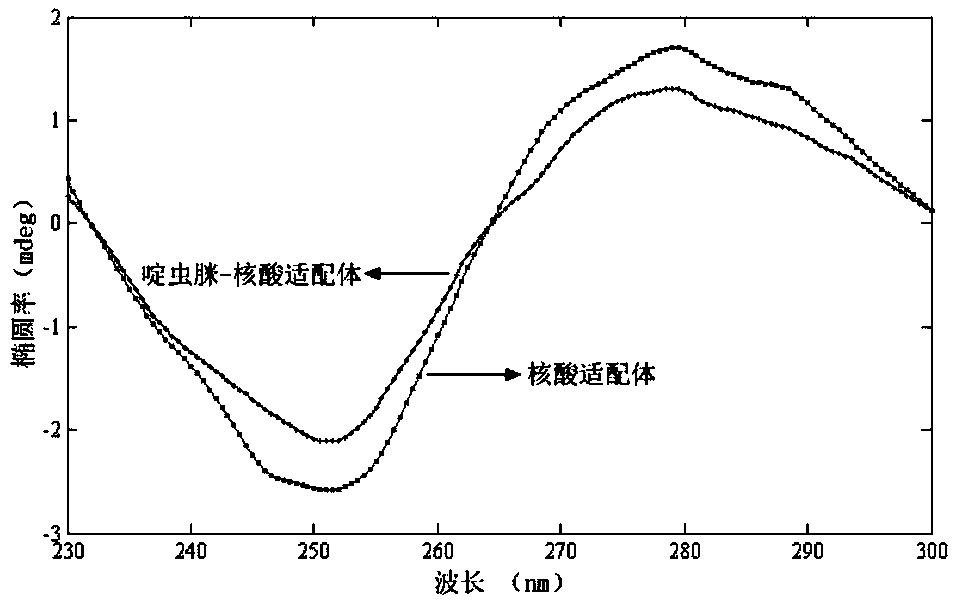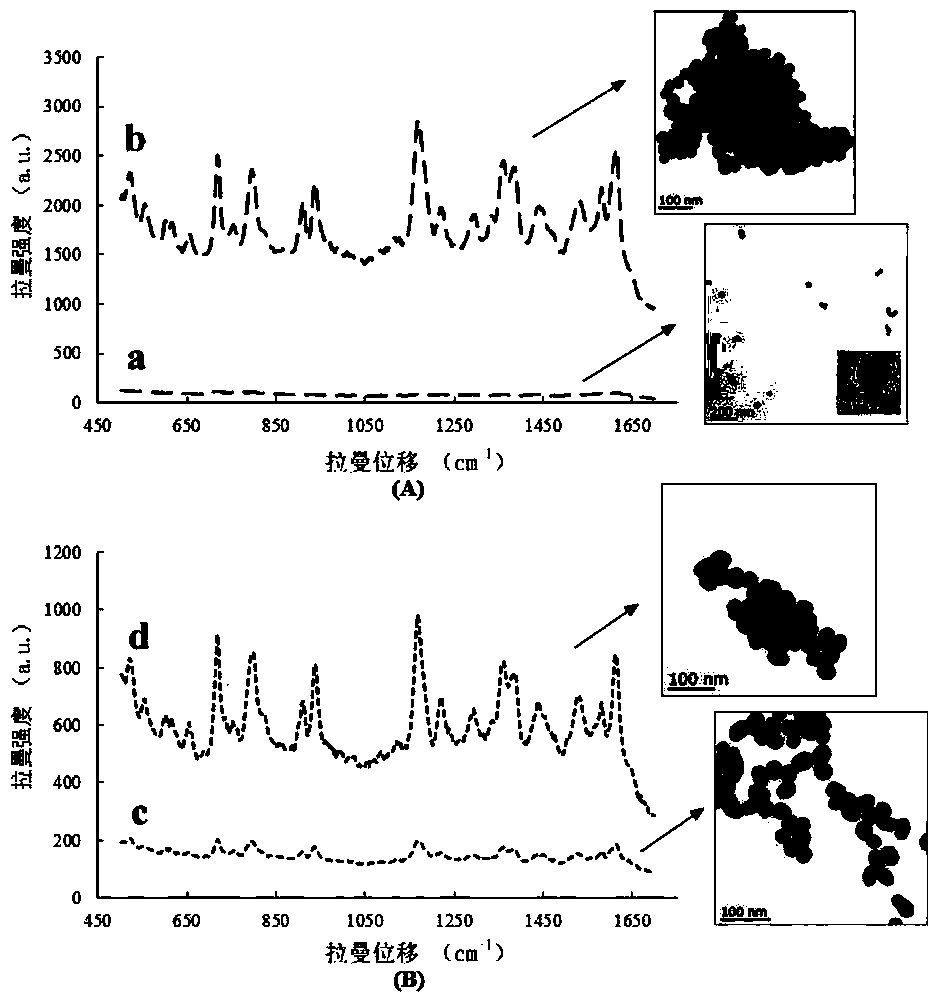A surface-enhanced Raman spectroscopy detection method for trace pesticide residues based on nucleic acid aptamers
A surface-enhanced Raman and nucleic acid aptamer technology, which is applied in Raman scattering, measurement devices, and material analysis by optical means, to avoid fluorescence interference, low synthesis cost, and improve detection sensitivity.
- Summary
- Abstract
- Description
- Claims
- Application Information
AI Technical Summary
Problems solved by technology
Method used
Image
Examples
Embodiment Construction
[0022] The present invention has versatility for trace pesticide residues, but because there are many types of pesticides, the present invention only selects acetamiprid, which is the most widely used in the mainstream pesticide category, as an implementation example, and the detection of other pesticides can refer to the method of this implementation example.
[0023] Example implementation steps are described in detail with reference to the accompanying drawings.
[0024] (1) Preparation of gold nanoparticles
[0025] The gold nanoparticles were prepared by the heating reduction method of trisodium citrate. First, freshly prepared aqua regia (1:3HNO 3 / HCl) soak the glassware used in the preparation, rinse with distilled water before use, and use after air drying. Next, get 0.0200g chloroauric acid and add 100ml ultrapure water, be mixed with 0.02% (M / V) solution and be placed in three-necked flask, and utilize electric heating mantle to carry out condensing reflux heating...
PUM
| Property | Measurement | Unit |
|---|---|---|
| particle diameter | aaaaa | aaaaa |
Abstract
Description
Claims
Application Information
 Login to View More
Login to View More - R&D
- Intellectual Property
- Life Sciences
- Materials
- Tech Scout
- Unparalleled Data Quality
- Higher Quality Content
- 60% Fewer Hallucinations
Browse by: Latest US Patents, China's latest patents, Technical Efficacy Thesaurus, Application Domain, Technology Topic, Popular Technical Reports.
© 2025 PatSnap. All rights reserved.Legal|Privacy policy|Modern Slavery Act Transparency Statement|Sitemap|About US| Contact US: help@patsnap.com



